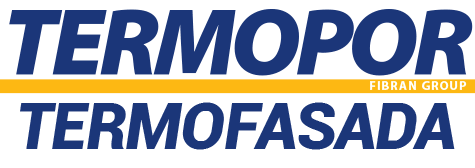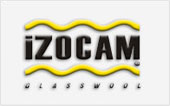Our products
Tips:
Termopor® insulation
TERMOPOR eps
- Polystyrene: a material with long and successful history
- Polystyrene is discovered in 1893 from an alchemist in Berlin, Germany; out of storax a natural remnant of the tree Liquidambar orientalis, with the distillation of the oily substance monomer he got a material that he called sterol.
- In 1930 the scientists in BASF, Ludvigshafen, Germany had upgraded the production process of this material and started with the commercial production of the sterol.
- In 1954 the sterol (in form of foam) that we use nowadays was accidentally discovered in the USA, by a chemist trying to find an easy (low weight) insulating material based on polystyrene; what he did was a combination of styrene with isobutylene under high pressure, which resulted in a polystyrene foam that was 30 times lighter than the normal hard polystyrene.
Characteristics of the product
- EPS (expanded polystyrene) is a product with a broad range of insulating values. In the structure of the product is 98% air, it’s not toxic, it’s resistant to fire and moist and it does not rot. EPS primarily is used as an effective thermal insulation of walls, roofs, floors at any type of structures. It can be produced in a broad range of dimensions and shapes. It has a great application in the packaging and food industry, as well as in the agriculture.
- Low weight
- TERMOPOR EPS is 98% effectively closed air and 2% material with very low weight. The densities at which is normally produces are 15-35 mg/m3; these attributes allow the product wide application in the constructional activities, and at the same time it is with very low weight which makes it easy to transport to the construction site, and inside the structure that is being built. The advantage of this low weight material that at the same time is very hard can be seen at the massive constructions where a thicker layer is needed, and at the same time to be light and hard, and at the bottom line to be cost efficient.
- Hardness and structural stability
- Despite the low weight, the simple structure of TERMOPOR EPS, allows for its exceptional hardness. The wetting of the material (rain exposure) in any case does not lower the characteristics in term of its dimensional stability, max. load allowed (which is not the case with the fiber-like insulations, the stone wool and the glass wool). This makes the product ideal for using it in the construction as for ex. when building higher buildings, bridges etc. For ex. a test that has been conducted in germany on a EPS panel that has been burrowed in the earth for 30 years, the results showed that its power of compression is 100Kp, which clearly demonstrates that after all that time the product still retains its constant stability and durability.
- Economical
- TERMOPOR eps does not absorb moisture, and it is resistant to all kinds of degradation of the insulating capabilities that are caused by water, moist or rot (same as the stone wool for example). The condensation is the main problem of the structure of almost any façade, at the non-insulated structures the moist-clogs are a common scene, and with time they grow and manifest as a permanent damaging of the structure that is very difficult to fix.
- Moist resistance
- TERMOPOR eps does not absorb moisture, and it is resistant to all kinds of degradation of the insulating capabilities that are caused by water, moist or rot (same as the stone wool for example). The condensation is the main problem of the structure of almost any façade, at the non-insulated structures the moist-clogs are a common scene, and with time they grow and manifest as a permanent damaging of the structure that is very difficult to fix.
- Handling and application
- TERMOPOR eps is light weighted, hard material that is safe to use and apply. The simplicity during its cutting and modeling enables a wide range of usage during the detailing of the facade (around windows, doors etc.) The cement, mold, concrete, plaster are all complementary materials that go with TERMOPOR EPS and when used in a combination with it don’t have any negative influence, on the other hand together they can be used in the various phases of the construction of the structures.



























